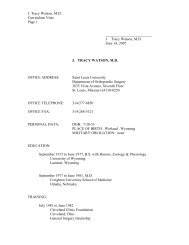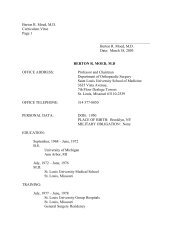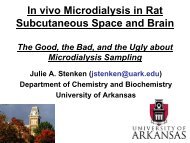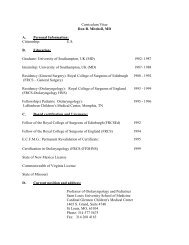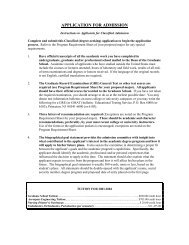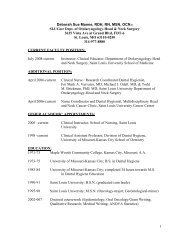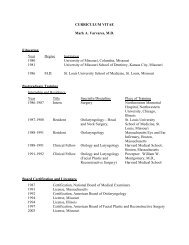Living Image 3.1
Living Image 3.1
Living Image 3.1
Create successful ePaper yourself
Turn your PDF publications into a flip-book with our unique Google optimized e-Paper software.
D. <strong>Image</strong> Data Display & Measurement<br />
Photons When image data is displayed in photons, the photon emission from the subject or<br />
radiance is displayed in photons/sec/cm 2/sr. Counts are a relative measure of the photons<br />
incident on the CCD camera and photons are absolute physical units that measure the<br />
photon emission from the subject.<br />
200<br />
The radiance unit of photons/sec/cm 2/sr is the number of photons per second that leave a<br />
square centimeter of tissue and radiate into a solid angle of one steradian (sr) (Figure D.3).<br />
Figure D.3 Isotropic radiation<br />
Isotropic radiation from a cell is called photon flux (photons/sec). When cells occur in tissue,<br />
photon emission from the tissue surface is called surface radiance (photons/sec/cm 2 /sr).<br />
A steradian can be thought of as a three-dimensional cone of light emitted from the surface<br />
that has a unit solid angle. Much like a radian is a unit of arc length for a circle, a steradian<br />
is a unit of solid angle for a sphere. An entire sphere has 4π steradians. Lens systems<br />
typically collect light from only a small fraction of the total 4π steradians.<br />
When image data is displayed in photons mode, the units change to photons/sec/cm 2/sr.<br />
These are units of photon radiance on the surface of the animal. A very important<br />
distinction between these absolute physical units and the relative units of counts is that the<br />
radiance units refer to photon emission from the subject animal itself, as opposed to counts<br />
that refers to photons incident on the detector.<br />
Measurements in units of radiance automatically take into account camera settings (for<br />
example, integration time, binning, f/stop, and field of view). As a result, images of the<br />
same subject acquired during the same session have the same signal amplitude regardless<br />
of the camera settings because the radiance on the animal surface does not change. The<br />
advantage of working with image data in photons mode is that camera settings can be<br />
changed during an experiment without having to adjust the images or the measured ROI<br />
data. <strong>Image</strong>s or ROI data can be quantitatively compared across different IVIS ® Imaging<br />
Systems.<br />
Xenogen Corporation calibrates the camera settings of each IVIS Imaging System at 600<br />
nm. The response of the CCD is relatively flat (~10%) over the range from 500-700 nm<br />
which includes the spectral variation found in bacterial or firefly luciferase. Therefore,<br />
calibration is accurate over this range.




